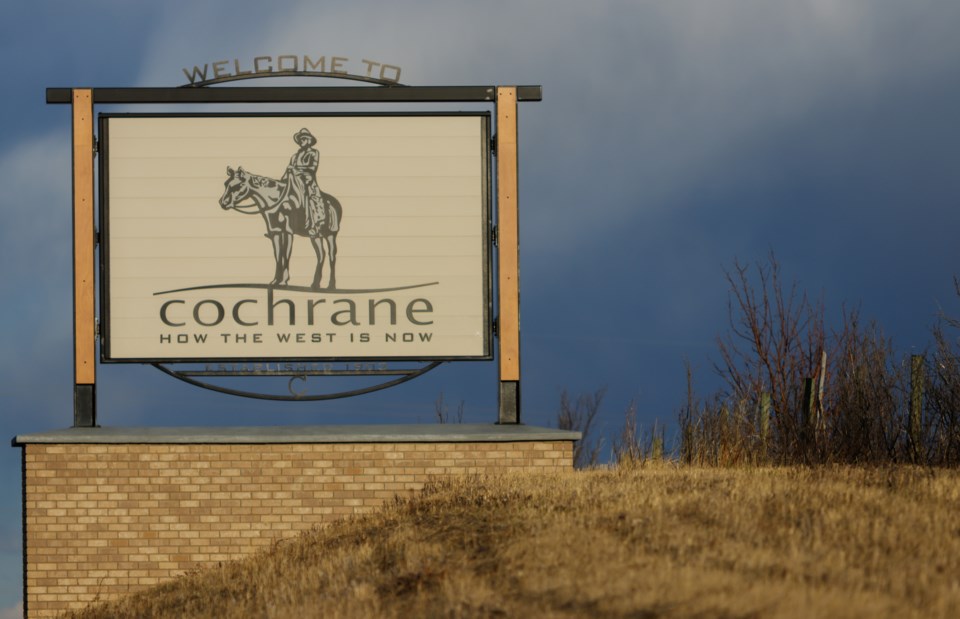COCHRANE— The deadline for the Calgary Metropolitan Region Board Growth and Servicing Plan is fast approaching and the final details continue to be fine-tuned.
A delegation provided an update on the Growth and Servicing Plan at Monday’s (May 10) council meeting. The plans, pending approval from the Calgary Metropolitan Region Board, will be delivered to the Alberta Minister of Municipal Affairs by June 1.
Mayor Jeff Genung said he appreciated the work Cochrane administrative has put into the plan during its creation. Their work has informed Cochrane's position on board policies and is helping to shape the community's growth into the future.
"It really has been a group effort," Genung said. "It's been a long hall but we are inching closer."
Once the plan and its technical aspects are completed, he said, they will be able to focus on economic development and making the region as desirable as possible for residents.
Former mayor of Portland and HDI. Inc representative Charles Hales is consulting in the creation of the Calgary Metropolitan Region Board Growth and Servicing Plan. He said several changes have occurred in the plans since the last presentation to Cochrane council in February.
“You’re not executing a U-turn here. You’re executing a course correction. You’re doing a lot of things right in the Calgary region and Cochrane and this plan will reinforce the good decision you have made and avoid mistakes other regions have made,” Hales said.
He described the plan as generous in maintaining land for development in the different regions around Calgary, adding it is designed to steer growth in a positive way that can incorporate a million additional people into the area in the coming decades.
The framework at the centre of the Calgary Metropolitan Regional Board emphasizes collaboration and working with one’s neighbours, he said.
The growth plan has been guided by three fundamental strategies— Creating compact mixed-use place types and redevelopment to improve environmental, economic and social outcomes for municipalities; directing urban development to key growth areas while ensuring efficient service delivery and equitable responsibilities between municipalities; and ensuring traditional rural areas can be reinforced and preserved through the use of clustered development, agricultural conservation, appropriate commercial areas and hamlets.
The growth plan includes 10 municipalities and four joint planning areas, including two within Rocky View County.
The preferred place types included in the plan include master-planned communities, mixed-use centres and infill and redevelopment. These work to create residential developments that bring employment and housing closer together, while using existing services.
Across the board, average minimum density is set to account for 74 per cent of growth. The highest average minimum density of development will be 15 or 20 units per acre in urban municipalities, and the lowest average minimum density would be five.
Any developments passed before January 2018 will be exempt from the regulations set by the Calgary Metropolitan Region Board. However, any land-use bylaws or area structure plans that experience major changes will be required to go before the board to ensure they adhere to the growth plan.
Exceptions can be made if needed based on circumstances.
Servicing priorities included in the plan are transportation and transit, long-term water strategies, water and wastewater utilities, stormwater management and recreation.
The next steps for the region to implement the service plan include context studies in joint planning areas and regional transit and a transportation master plans to develop a transportation corridor for regional economic development.
Economic wellbeing is also included in the policy and a focus has been set on promoting walking, cycling and transit jobs in all municipalities.
Water stewardship remains important in the region, Hale said, and fostering shared services optimization has been added into the planned protection for regional corridors.
In the plan, a policy of note has been the creation of joint planning areas in spaces that will experience or are already experiencing growth to minimize conflict, Hale said. He added the Calgary Metropolitan Region Board will be able to create additional joint planning areas in spaces that may experience shared growth.
The final Calgary Metropolitan Region Board meeting takes place on May 21 and the plan will be brought forward for final approval at this time.
A special meeting has also been set for May 17 for Cochrane Council to unpack the plans place in town.
“It doesn’t guarantee consensus but it does put you at the table with a common purpose of planning an area and servicing it,” Hale said.
Councillor Patrick Wilson said the Calgary Metropolitan Region Board Growth and Servicing Plan can be a "double-edged sword."
While he is generally in favour of less government regulation, there can be a utility to an organization like the board. There is a need to establish a plan for the conservation of water resources in the area and sharing of recreation.
Growth remains a concern in Cochrane, especially in the Bearspaw region. He noted at this time Bearspaw is not listed as a growth zone in the Calgary Metropolitan Region Board Growth and Servicing Plan but worries for the future of the area.
Coun. Tara McFadden said she has received multiple calls and emails from Cochranites regarding the Calgary Metropolitan Region Board— Many were centred on trying to understand the purpose of the organization.
"It's kind of a misunderstanding about what the CMRB is all about, and seeing it as a top-down level as opposed as an opportunity for the region to work collaboratively together," McFadden said




